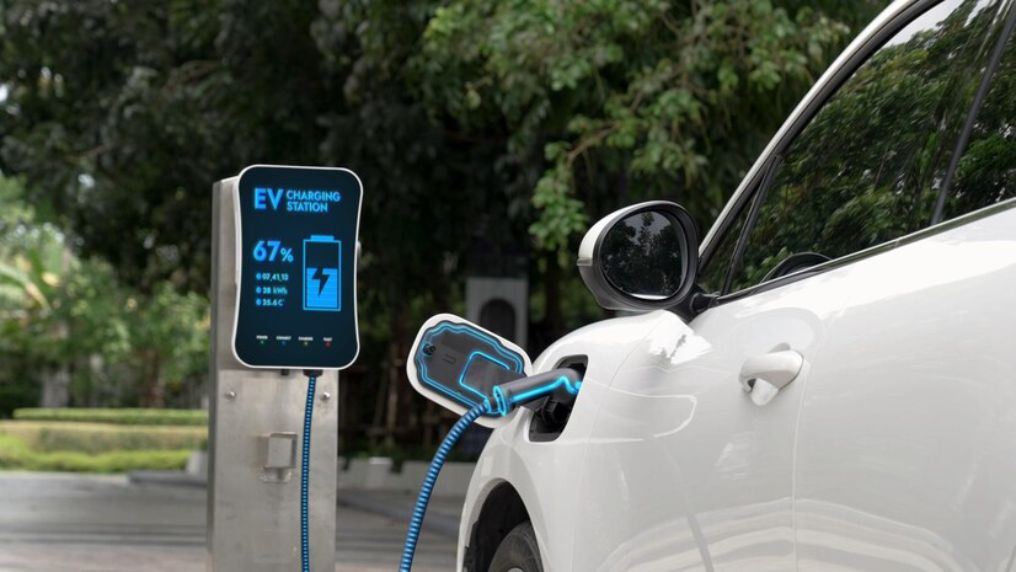The rise of electric vehicles (EVs) has sparked a flurry of questions, and one of the most common ones is: Do EVs have engines? The answer, like many things in the world of cars, is a bit more nuanced than a simple yes or no. Let’s delve into the heart of this question and explore the fascinating world of electric propulsion.
The Traditional Engine: A Burning Heart
Most of us are familiar with the conventional gasoline-powered engine. This intricate piece of machinery uses a series of controlled explosions to convert the chemical energy stored in fuel into mechanical energy that propels the vehicle. This process involves burning fuel in a cylinder, forcing pistons to move, and ultimately creating the power that turns the wheels.
The Electric Alternative: A Different Kind of Drive
Electric vehicles, however, ditch the internal combustion engine altogether. Instead, they rely on electric motors powered by electricity stored in a large battery pack. These motors convert electrical energy into mechanical energy directly, without the need for combustion or complex mechanics.
So, Do They Have Engines? A Matter of Definition
Technically, EVs don’t have engines in the traditional sense. They lack the pistons, cylinders, and combustion process that define a gasoline engine. However, they still have electric motors that convert energy and propel the vehicle. So, it depends on how you define “engine.”
The Powerhouse of an EV: More Than Just a Motor
While electric motors are the core of an EV’s propulsion system, they’re not alone. An EV’s powertrain involves several key components working in harmony:
- Battery Pack: The heart of the EV, storing the electrical energy that powers the motor.
- Battery Management System: Monitors and manages the battery, ensuring its health and safety.
- Electric Motor: Converts electrical energy into mechanical energy, driving the wheels.
- Power Electronics: Controls the flow of electricity between the battery and motor.
- Transmission (Optional): Some EVs use a single-speed transmission, while others have multiple gears for improved efficiency.
Comparing Apples and Oranges: Performance and Experience
While the fundamental principles are different, both electric motors and gasoline engines deliver the essential function of propelling a vehicle. However, their characteristics differ:
- Power Delivery: Electric motors offer instant torque, resulting in quicker acceleration and a smoother driving experience. Gasoline engines take time to build power, leading to a more gradual acceleration feel.
- Efficiency: Electric motors convert most of the stored energy into usable power, making them highly efficient. Gasoline engines lose a significant amount of energy as heat, reducing efficiency.
- Emissions: EVs produce zero tailpipe emissions, making them a cleaner option for the environment. Gasoline engines release harmful pollutants, contributing to air pollution.
Beyond the Engine: The Future of Mobility
The shift from gasoline to electric vehicles represents a significant change in automotive technology. While the “engine” debate highlights the differences, it’s important to recognize that EVs offer a broader set of benefits beyond just a different power source.
- Sustainability: EVs are crucial for reducing greenhouse gas emissions and mitigating climate change.
- Quiet Operation: EVs generate significantly less noise, contributing to a quieter urban environment.
- Lower Maintenance Costs: EVs have fewer moving parts, leading to lower maintenance costs compared to gasoline cars.
The Final Lap: A Shift in Perspective
So, do EVs have engines? It depends on your definition. But one thing is clear: EVs are revolutionizing the way we think about and experience mobility. They offer a cleaner, more efficient, and potentially more enjoyable driving experience, paving the way for a sustainable future on the road. As technology evolves, the lines between traditional and electric powertrains may continue to blur, but the core concept of propelling vehicles forward remains the same. The journey may change, but the destination – a cleaner and more sustainable transportation landscape – remains the ultimate goal.

